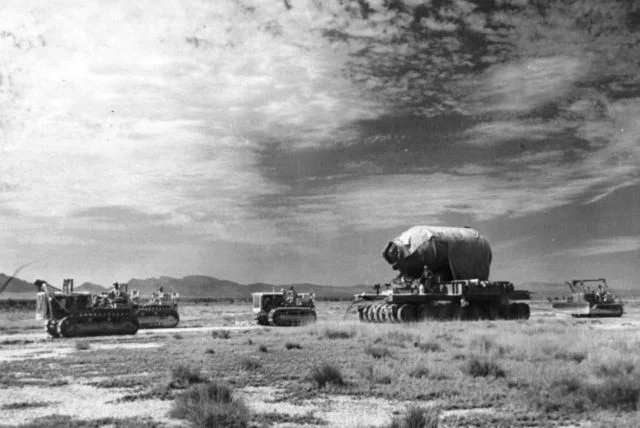In 1945 the Japanese cities of Hiroshima and Nagasaki saw firsthand the destructive powers of the nuclear bomb. The atomic bomb decimated both cities and created a new type of warfare that many people still worry about today. But the bombing of those cities was not the first detonation of the atomic bomb. This occurred out in the desert of New Mexico, at a place now known as the Trinity Site.
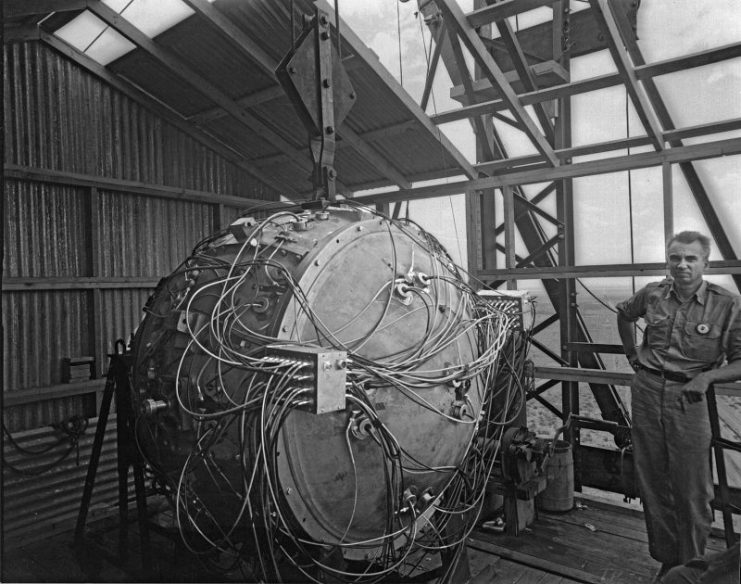
Background
It all began in 1939, when word came out that German scientists had discovered what happens when you split uranium atoms. Several scientists had fled the country for varying reasons to the United States, and decided they needed to alert the government of the dangers associated with this newfound science. There was a fear amongst leaders that the Germans would utilize the technology and science to wreak havoc on communities, so the United States set out to develop the atom bomb.
In 1941, they began researching and developing the new type of bomb. The secret project was nicknamed The Manhattan Project. From here things moved slowly. President Roosevelt wasn’t completely behind the project, believing it was unnecessary and costly. Nevertheless, he allocated funds to allow the project to move along, albeit at a slow pace.
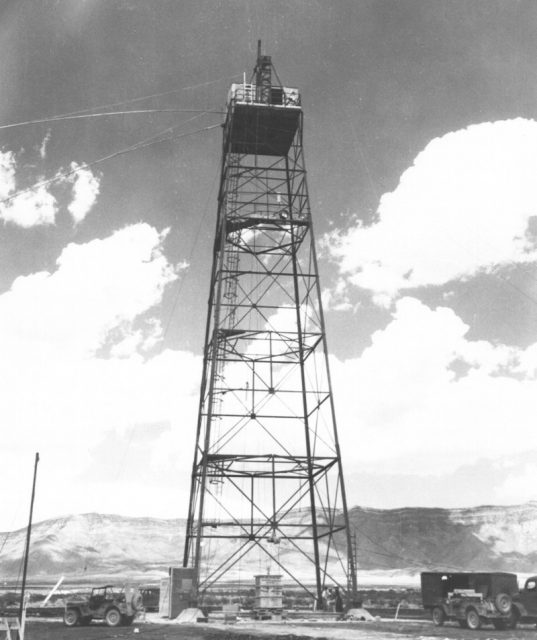
Just a year later, in 1942, a group of physicists made the first controlled nuclear chain reaction at a stadium in Chicago, Illinois. This was considered a huge milestone, and at this point, the President approved more funding for the project.
Fast forward just three years, to 1945, and the scientists had successfully developed the bomb. Questions were thrown around about where to test it; after all, it needed to remain a secret. Leaders chose a site out in the Jornada del Muerto Desert in New Mexico.
Trinity Site
The area is remote, which is just what officials were looking for when choosing an area to test the weapon. At the time of selection there was only a small farm, which contained a house and several buildings. The farm sat about two miles southeast of the eventual detonation site and was acquired by the U.S. government in 1942. The home was used as a lab for the project and was a part of the assembly of the bomb, which the crews referred to as the Gadget.
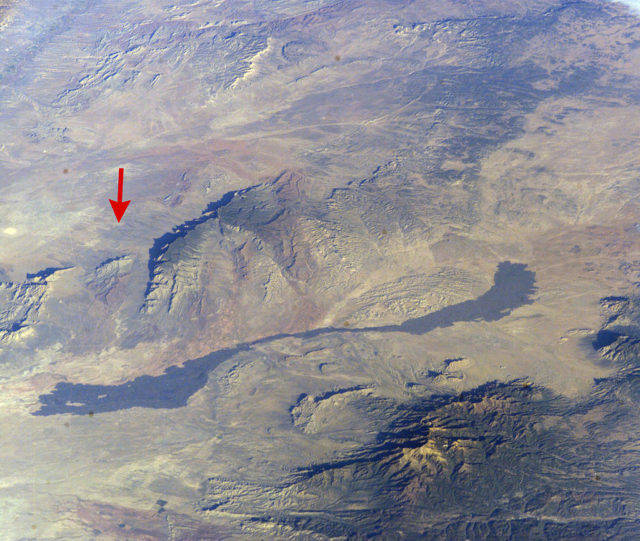
Workers begin arriving at the site in late 1944. At first, there were just 160 men working at Trinity. To house workers, barracks were built along with officer’s quarters and other basic amenities and facilities.
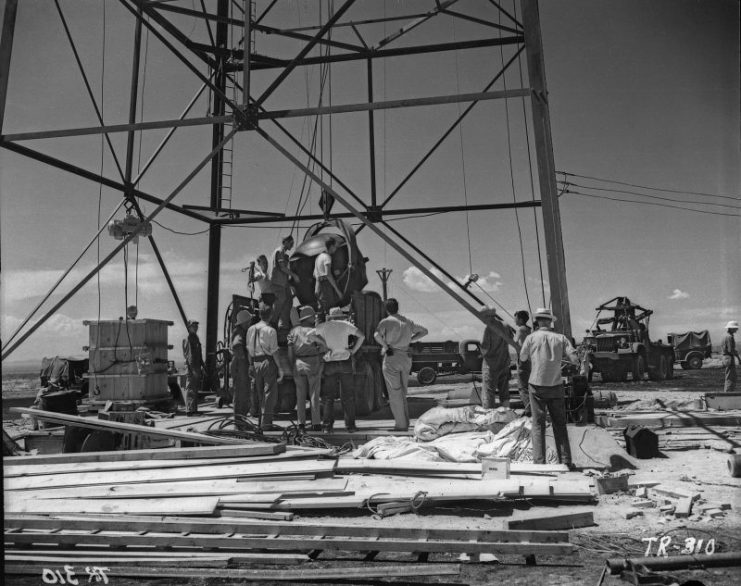
The water was filled with alkaline. Because of this, water had to be shipped in via the United States Navy. Other items brought in included gasoline and diesel as well as the products necessary to build everything on base. At the time the site was chosen, infrastructure was poor, so roads were built to allow for shipments, and about 200 miles of telephone wire were strung to allow officials to reach their higher ups.
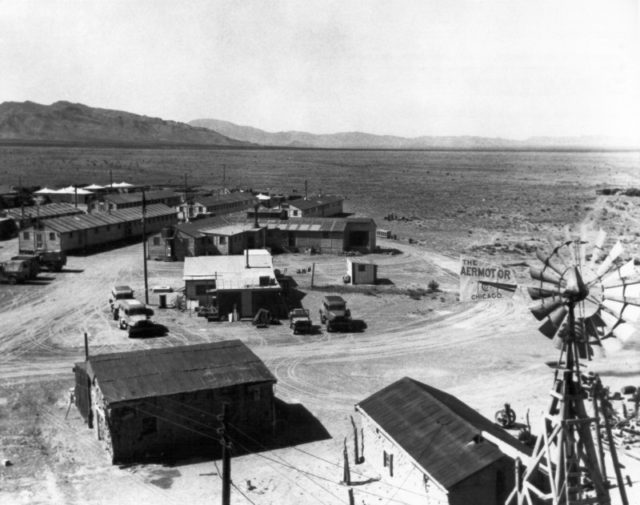
By the summer of 1945, the base had swelled to about 250 workers. In May, the camp was bombed twice on accident. The aircrew that bombed the site didn’t know it existed and were on a nighttime practice mission. They believed the lights they saw at the Trinity Site were actually their targets. No one was seriously hurt or killed, but the base did suffer some damage.
The Testing and the Explosion
Originally, it was decided that they would forgo a test run and just blow up the bomb. But because there would only be one shot at correctly detonating the bomb, it was decided they should do a rehearsal. This was scheduled for May 5 but was pushed back several days.
The rehearsal was held about 800 yards south of the Trinity Site and used 108 long tons of TNT to detonate the bomb. It was detonated in the early hours of the morning and could be seen from 60 miles alway. Because of the way the test bomb was designed, there was no shock at ground zero.
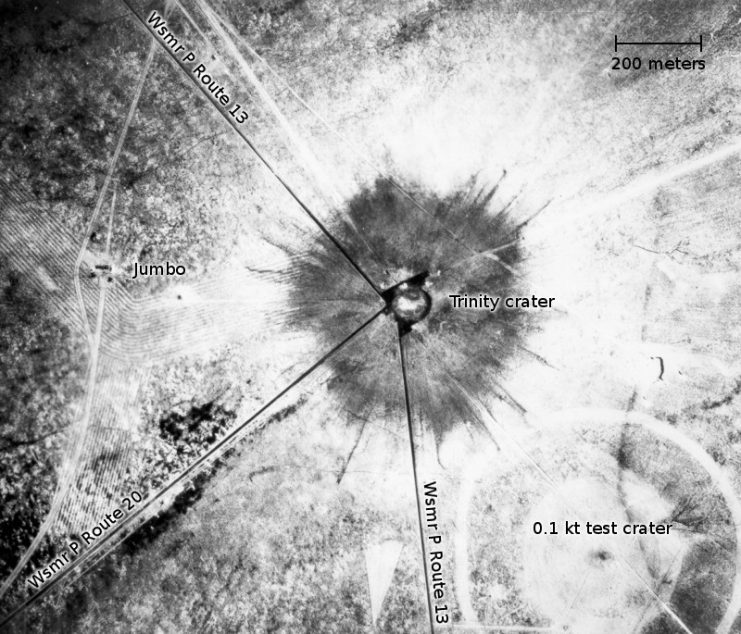
The test was considered a success, although it did expose some holes in the operation. For one, organizers realized they needed more equipment and infrastructure. They also realized the need to seal the roadways surrounding the area. It was necessary as sand on the roads was interfering with instruments being used on site. Sealing the roadways wasn’t cheap either, coming in at about $5,000 per mile.
Two months passed before they would be ready to detonate their atom bomb. It was decided that the bomb should be placed in a casing to save the plutonium should something go wrong, allowing for the plutonium to be used again. So they built a casing which they named Jumbo. Jumbo was to be suspended from the shot tower at an explosion.
July 18-21 were selected as the most optimal, in terms of weather, to detonate the bomb, but July 16 was eventually decided upon. The plan was to detonate it in the early morning hours. On July 16, 1945, after five a.m., the first atomic bomb ever was exploded and shot a mushroom cloud up seven and a half miles into the sky.
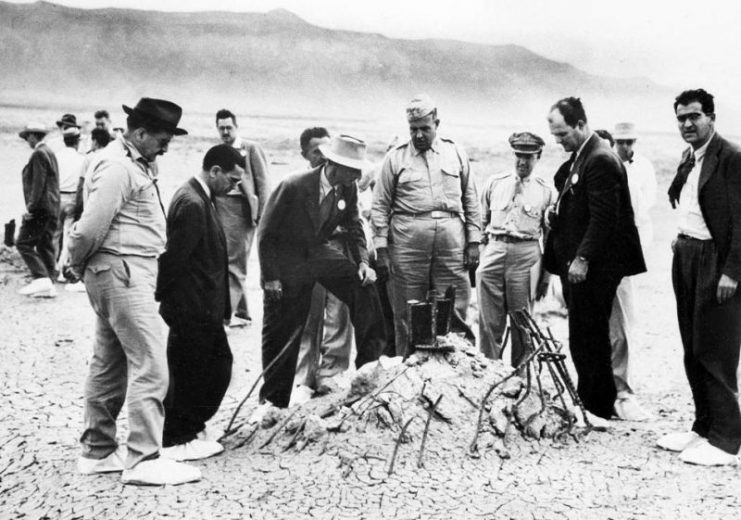
The shockwave acted fast, hitting observers in just under a minute. It’s been said the shockwave could be felt more than 100 miles away. Observers of the blast said that it lit the mountainside up like daytime for several seconds. It also left a large crater in the ground, about five feet deep and 30 feet wide.
Civilians nearby saw and heard the blast, and quickly reported it. In response, the U.S. military released a statement saying a bunch of ammunition blew up, and that’s it. Some people reported seeing “bright lights” from 150 miles.
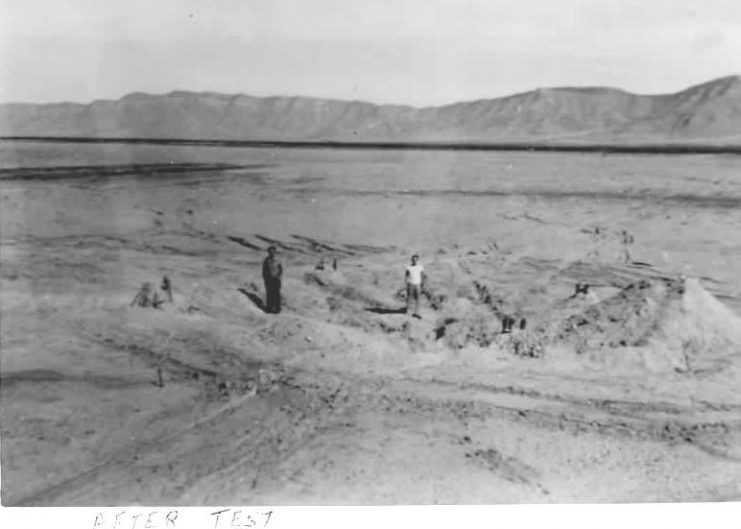
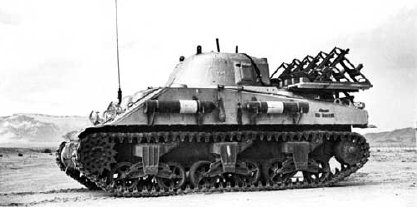
The Area Today
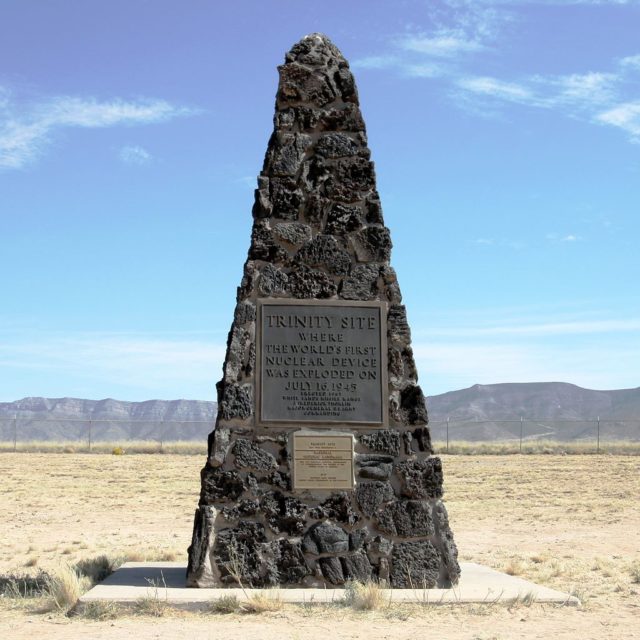
Trinity Site had a lasting effect on the world. Just three weeks later the bomb that was tested here would be utilized to attack both Hiroshima and Nagasaki, killing hundreds of thousands of people. Today, Trinity has become a historic area for visitors.
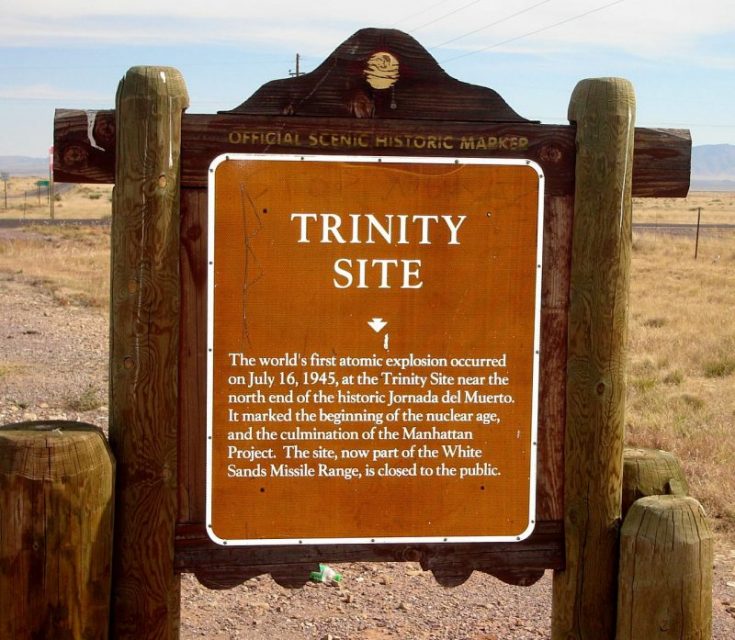
The site was designated a historic landmark in 1965 and is open to the public twice a year. At the spot of the detonation sits an obelisk with a plaque that reads “Trinity Site where the world’s first nuclear device was exploded on July 16, 1945.”
